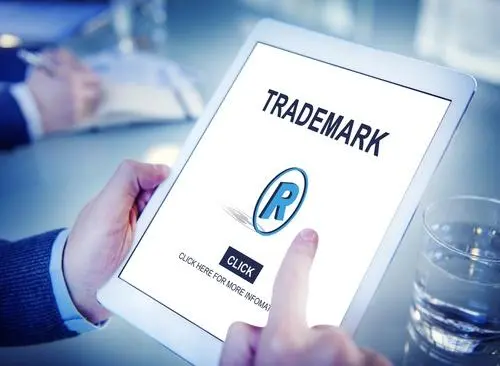USPTO Trademark Assignment: Everything You Need To Know
USPTO trademark assignment is the process of assigning a trademark you have registered with the U.S. Patent and Trademark Office to a third party. 3 min read updated on February 01, 2023
Updated November 25, 2020:
USPTO trademark assignment is the process of assigning a trademark you have registered with the U.S. Patent and Trademark Office to a third party. A trademark is a symbol, word, device, phrase, or combined elements that represent your business or brand. When this mark is associated with the quality of your services, it is a valuable form of intellectual property (IP). Because this is considered an asset, it can be assigned. Assignment means to transfer the ownership rights of your trademark to a third party in exchange for profit or benefit. Registered and pending trademarks, as well as patents and patent applications, can be assigned. You must file an assignment agreement with the USPTO. Business reorganization, acquisition, and other circumstances may result in a trademark assignment.

Steps in Assigning a Trademark
- Draft an assignment agreement and have it signed by both parties. Name the person or company buying the trademark as the assignee and the current trademark owner as the assignor. Clearly identify both these parties as well as the trademark in question. Establish terms such as the cost of the trademark, how disputes about the assignment will be settled, and who will pay the transfer fee.
- Fill out the Recordation Form Cover Sheet, which can be completed online. You'll need to include the name and address of a registered agent to receive official USPTO information.
- Submit both the agreement and the cover sheet to the USPTO's Assignment Recordation unit. This can be done online, by fax, or through standard mail. The latter two options require you to establish a deposit account to pay the USPTO recording fee. Mailed forms can be submitted with a money order or check payable to the USPTO director.
- If your trademark is state-registered, you must also record the transfer with the applicable state.
- The USPTO Patent and Trademark Database will be automatically updated for assignments as well as name changes and mergers. When filling out your form, check one of those boxes for the nature of conveyance to ensure that records are updated. Do not select other, which will not update the record. The records will also not be updated if you file multiple documents with the same execution date, the application is in a blackout period, or you have exceeded the allowed number of ownership changes. In these cases, you must make a written request to have the database updated.
- Choose the correct conveyance type, either assignment of part of the interest or assignment of the entire interest along with the associated goodwill.
Points To Remember
All trademark transfers must also include the mark's associated goodwill . This includes the earning power created by customer recognition of the mark. Trademark assignment may be found invalid if the goodwill does not accompany the transfer of the mark.
Failing to follow the ownership transfer procedures can result in liability if the assignee infringes on a third-party trademark. If you buy a trademark and the original owner does not transfer ownership, a dispute could result.
Check the database to determine whether the updates have been made. Click ownership to display the current owner or assignment to display the entire chain of title.
Do not use assignment if you simply need to change your name as the trademark owner. Instead, record the name change through the USPTO Assignment Recordation Branch .
Patent and Trademark Ownership
When it comes to a patent, owning the patent gives you the exclusive right to sell, manufacture, and use the invention in question. Patents last for 20 years while trademark registration lasts for 10 years and can be renewed. The term ownership references the current holder of a trademark or patent. If you own a registered trademark, no one else can use that mark on their products or services, and imports carrying an infringing mark may be blocked from entry by U.S. Customs and Border Protection.
Assignment Fees
While trademark assignment once carried a $25 fee and a $40 fee was required for trademarks, the USPTO recently discontinued this fee for patents and not for trademarks. That's because trademarks are rarely assigned while the assignment is quite common in the fast-paced world of patents.
If you need help with USPTO trademark assignment, you can post your legal need on UpCounsel's marketplace. UpCounsel accepts only the top 5 percent of lawyers to its site. Lawyers on UpCounsel come from law schools such as Harvard Law and Yale Law and average 14 years of legal experience, including work with or on behalf of companies like Google, Menlo Ventures, and Airbnb.
Hire the top business lawyers and save up to 60% on legal fees
Content Approved by UpCounsel
- Trademark Assignment Recordation
- Trademark Transfer: Everything You Need To Know
- How Long Does a Trademark Last
- Trademark Law
- Selling Trademarks
- Trademark Checklist
- Are All Trademarks and Names Legally Protected
- Available Trademarks
- What does Trademark Mean
- Purpose of Trademark
Trademark assignment—How-to guide
Find out more about business management

by LegalZoom staff
Read more...
Updated on: February 15, 2024 · 10 min read
1. Overview
- 2. Do's & don’ts checklist
3. Trademark assignment instructions
A company’s ability to buy and sell property is essential to its long-term life and vitality. Although it does not take up physical space, an excess of intellectual property can burden a company, directing limited funds towards maintaining registrations, defending against third-party claims, or creating and marketing a final product. Selling unused or surplus intellectual property can have an immediate positive effect on a company’s finances, generating revenue and decreasing costs. When it does come time to grow a business, companies looking to purchase property (including trademarks or software) to support their growth must be sure that the seller does, in fact, have title to the desired items. A properly drafted trademark assignment can help in both circumstances.
A trademark assignment is the transfer of an owner’s property rights in a given mark or marks. Such transfers may occur on their own or as parts of larger asset sales or purchases. Trademark assignment agreements both provide records of ownership and transfer and protect the rights of all parties.
If you follow the enclosed sample and guidelines, you will have a written acknowledgment of the rights and responsibilities being transferred as part of your sale. This will provide essential documentation of ownership and liability obligations, and you will be well on your way to establishing a clear record of title for all of your trademarks.
2. Do's & don’ts checklist
- A trademark protects names, terms, or symbols used to identify the products of a certain manufacturer or company. This includes brand names like “Coca-Cola” and images like Nike’s famous “swoosh.” A trademark assignment is the transfer of ownership rights in a mark from one party to another. Both the trademark and the goodwill or business associated with it must be conveyed: a transfer without goodwill is considered invalid. Keep this in mind if you revise the language of the enclosed document.
- An assignment is different than a license, which is a grant of permission to use a trademark in some restricted way (e.g., a limited time, specific purpose, particular area, etc.). A transfer of partial rights is not a trademark assignment: do not revise the agreement to limit the reach of the rights being provided.
- A trademark transfer is typically accomplished through a contract, like the written agreement form that follows. However, after the parties have negotiated and signed their agreement, the transfer must be recorded with the U.S. Patent and Trademark Office (USPTO). The agreement will not be effective if this registration is not made.
- The advantage of selling your trademark outright (and not simply licensing or attempting to develop and market it yourself) is that you are guaranteed payment at the price you and the purchaser have negotiated. On the other hand, that one-time payment is all that you will ever receive for your property: you will no longer have the right to control anyone else’s use of your creation. By using it yourself or offering a temporary license, you retain the potential for future income. However, such income is by no means certain, and your opportunities are paralleled by risk. Before selling all of your rights in a trademark, make sure that this is the best (and most lucrative) approach for you and your company.
- Do not enter into an agreement without completing your due diligence. If you are purchasing a trademark, conduct searches with the USPTO, all 50 states, DBA filings, other government agencies, and online directories to make sure the seller actually has complete and unique rights in the offered property. Although your findings will not guarantee title, you may have protection as an “innocent purchaser” if disputes arise. You might also find critical information about the valuation and breadth of the mark. Consider hiring a professional to help in your investigation: comparing trademarks often requires a specialized understanding of what marks will be considered confusingly similar or deceptive.
- If you are selling a trademark, make sure you own it. Although this may seem obvious, ownership of intellectual property is rarely clear-cut. For example, you may have a name that you think of as your trademark, but unless you have used it in business, you do not have rights in that mark. Even if you have been using a mark in your business, another company may have started using it before you and have priority rights in that mark. A thorough search of the relevant marketplace and registry office should be conducted before you attempt to sell your trademark.
- Both parties should review the assignment carefully to ensure that all relevant deal points have been included. It is better to be over-inclusive than under-inclusive. Do not assume that certain expectations or terms are agreed to if they are not stated expressly in the document.
- Sign two copies of the assignment, one for you and one for the other party.
- It’s a good idea to have your assignment notarized. This will limit later challenges to the validity of a party’s signature or of the transfer itself.
- If your agreement is complicated, do not use the enclosed form. Contact an attorney to help you draft an assignment that will meet your specific needs.
The following provision-by-provision instructions will help you understand the terms of your assignment. The numbers and letters below (e.g., Section 1, Section 2, etc.) correspond to the provisions in the agreement. Please review the entire document before starting your step-by-step process.
- Introduction of parties. Identifies the document as a trademark assignment. Write in the date on which the agreement is signed. Identify the parties and, if applicable, what type of organization(s) they are. Note that each party is given a name (e.g., “Assignor”) that will be used throughout the agreement. The Assignor is the party that is giving (“assigning”) its ownership interest, and the Assignee is the party receiving it.
- Recitals. The “whereas” clauses, referred to as recitals, define the world of the assignment and offer key background information about the parties. In this agreement, the recitals include a simple statement of the intent to transfer rights in the trademark.
- Section 1: Assignment of marks. The assignment and acceptance of the assignment of the trademarks and service marks. Note that the marks being assigned are not described in the agreement itself. The assignment references “Schedule 1,” and explains that the full description is located on that schedule. Be as complete and clear as possible in your description of the property being transferred. Note too the emphasis placed on the goodwill being sold with the property. Goodwill can be defined as the intangible value of a piece of property (e.g., a brand’s reputation and recognizability). Remember that this is an essential element of a trademark transfer: assignments attempted without goodwill are considered invalid.
- Section 2: Consideration. In most agreements, each party is expected to do something. This obligation may be to perform a service, transfer ownership of property, or pay money. In this case, the Assignee is giving money (sometimes called “consideration”) to receive the Assignor’s property. Enter the amount to be paid, and indicate how long the Assignee has to make that payment after the agreement is signed.
- 3(a): it is the owner
- 3(b): it has not sold or transferred the marks to any third party.
- 3(c): it has the authority to enter the agreement.
- 3(d): it does not believe that the marks have been taken from any third party without authorization (e.g., a knowing copy of another company’s trademark).
- 3(e): it does not know of any permissions that have to be obtained in order for the assignment to be completed. In other words, once the agreement is signed, the assignment will be effective without anyone else’s input.
- 3(f): the marks weren’t created while the creator was employed by a third party. In many cases, if an individual was employed by a company and came up with a product, the company will own that product. This section offers assurance to the Assignee that there are no companies that will make that claim about the marks being sold. If you and the other party want to include additional representations and warranties, you can do so here.
- 4(a): has the authority to enter the agreement.
- 4(b) has enough funds to pay for the assignment.
- If you and the other party want to include additional representations and warranties, you can do so here.
- Section 5: No early assignment. Prevents the Assignee from re-transferring the marks, or using them as collateral for loans, until it has made complete payment of the money due under the agreement.
- Section 6: Documentation. The Assignor’s promise to help with any paperwork needed to complete an assignment (e.g., filing information about the assignment with the USPTO and transferring document titles). The bracketed phrases make the additional promise that the Assignor will help with transfer paperwork for filings outside of the country. If this is not relevant to your agreement, delete the bracketed phrases.
- Section 7: No further use of marks. Indicates that after the effective date of the agreement, the Assignor will stop using all of the trademarks being transferred and will not challenge the Assignee’s use of those marks.
- Section 8: Indemnification. A description of each party’s future obligations if the trademark is found to infringe on a third party’s rights. There are two options provided, and you should choose the one that best fits with your situation. In the first, the Assignor takes all responsibility for infringement, promising to pay all expenses and costs relating to the claim. In the second, the Assignor makes its responsibilities conditional, greatly limiting its obligations if a claim is brought. Select only one of these options, and delete the other.
- Section 9: Successors and assigns. States that the parties’ rights and obligations will be passed on to successor organizations (if any), or organizations to which rights and obligations have been permissibly assigned.
- Section 10: No implied waiver. Explains that even if one party allows the other to ignore or break an obligation under the agreement, it does not mean that the party waives any future rights to require the other to fulfill those (or any other) obligations.
- Section 11: Notice. Lists the addresses to which all official or legal correspondence should be delivered. Write a mailing address for both the Assignor and the Assignee.
- Section 12: Governing law. Allows the parties to choose the state laws that will be used to interpret the document. Note that this is not a venue provision. The included language will not impact where a potential claim can be brought. Write the applicable state law in the blank provided.
- Section 13: Counterparts/electronic signatures. The title of this provision sounds complicated, but it is simple to explain: it says that even if the parties sign the agreement in different locations, or use electronic devices to transmit signatures (e.g., fax machines or computers), all of the separate pieces will be considered part of the same agreement. In a modern world where signing parties are often not in the same city—much less the same room—this provision ensures that business can be transacted efficiently without sacrificing the validity of the agreement as a whole.
- Section 14: Severability. Protects the terms of the agreement as a whole, even if one part is later invalidated. For example, if a state law is passed prohibiting choice-of-law clauses, it will not undo the entire agreement. Instead, only the section dealing with the choice of law would be invalidated, leaving the remainder of the assignment enforceable.
- Section 15: Entire agreement. The parties’ agreement that the document they’re signing is “the agreement” about the issues involved. Unfortunately, the inclusion of this provision will not prevent a party from arguing that other enforceable promises exist, but it will provide you some protection from these claims.
- Section 16: Headings. Notes that the headings at the beginning of each section are meant to organize the document and should not be considered operational parts of the note.
- Schedule 1: List of trademarks and/or service marks. In order for a trademark assignment to be effective, the marks being transferred must be clearly identified. Be thorough in your description and attach any registrations or samples that you may have. If you do include samples, reference the inclusion of those samples in the schedule (e.g., “See attached drawing.”).
You may also like

Why do I need to conduct a trademark search?
By knowing what other trademarks are out there, you will understand if there is room for the mark that you want to protect. It is better to find out early, so you can find a mark that will be easier to protect.
October 4, 2023 · 4min read

How to write a will: A comprehensive guide to will writing
Writing a will is one of the most important things you can do for yourself and for your loved ones, and it can be done in just minutes. Are you ready to get started?
May 17, 2024 · 11min read
You are using an outdated browser. Please upgrade your browser to improve your experience.

How does it work?
1. choose this template.
Start by clicking on "Fill out the template"
2. Complete the document
Answer a few questions and your document is created automatically.
3. Save - Print
Your document is ready! You will receive it in Word and PDF formats. You will be able to modify it.
Trademark Assignment
Rating: 4.8 - 30 votes
A Trademark Assignment is a document used when one person owns a registered trademark (like a brand name or logo ) and wishes to transfer the ownership of that trademark to another person. Written Trademark Assignments are important, as it's best for both parties to have a memorialized record of the assignment.
Trademark Assignments allow the easy transfer of the mark. They contain all the information needed to record the assignment with the United States Patent Office (USPTO) . Recordation with the USPTO is necessary for all registered trademarks that are being transferred, and it is a good way to ensure everything flows smoothly with the assignment.
This is different than a Licensing Agreement , as here, the entirety of the mark is being transferred to a new party. In a Licensing Agreement, the mark still belongs to the original owner, but the other party pays royalties for permission to use it.
This is also slightly different than an Intellectual Property Release . Although that form could be used for a trademark, generally it is used for copyrighted material, like works of art or pieces of music. In that case, payment is not made and instead, the copyrighted works are simply "released," or given, to another party.
This document can also be distinguished from an Intellectual Property Permission Letter , as there, one party is writing to request permission to use the intellectual property of another. A Licensing Agreement or Intellectual Property Release or even Trademark Assignment could come after the Intellectual Property Permission Letter, but that is not a formal legal document, and is instead, a template for a letter to be used to have the initial conversation about intellectual property use.
How to use this document
This document can be used to transfer the ownership of an existing trademark or when an individual would like an existing trademark transferred to them, as long as the owner agrees. It should be used when both parties understand that the trademark will be completely assigned (in other words, this is not a license, as noted above, and no royalties will be due after the assignment) and wish to create a record of their agreement.
This document will allow the parties to fill in details of the mark to be transferred, as well as ensure that everything needed for recordation with the USPTO is present. Either party - either the person assigning the trademark or the person receiving the trademark - can fill out this form.
Once the form is complete, the parties can undertake the following steps:
1) Sign and execute the form in front of a notary (both parties)
2) Have the notarization completed
3) Record the Trademark Assignment with the United States Patent and Trademark Office
Applicable law
Trademark Assignments are related to the trademark law of the United States, which is covered by a federal statute called the Lanham Act. The section of the Lanham Act specifically referring to assignments is 15 U.S.C. § 1060(a).
How to modify the template:
You fill out a form. The document is created before your eyes as you respond to the questions.
At the end, you receive it in Word and PDF formats. You can modify it and reuse it.
A guide to help you: How to Register A Trademark
Other names for the document:
Agreement to Assign Brand, Assignment for Trademark, Brand Assignment, Intellectual Property Assignment Agreement, Logo Assignment
Country: United States
Intellectual Property and New Technologies - Other downloadable templates of legal documents
- Terms and Conditions for a Website
- Non-Disclosure Agreement (NDA)
- Privacy Policy For Website Or Mobile App
- Copyright Assignment
- Intellectual Property Permission Letter
- Intellectual Property Release Form
- Intellectual Property Cease and Desist Letter
- Model Release Form
- Personal Data Deletion Request
- Licensing Agreement
- Influencer Agreement
- Online Advertising Agreement
- Online Sponsorship Agreement
- Website or Mobile Disclaimer
- Media Release Agreement
- Graphic Design Agreement
- Affiliate Agreement
- Refund Policy
- Testimonial Release
- Copywriting Agreement
- Other downloadable templates of legal documents
Trademark Attorneys Trusted For Our Experience®
Trademark Assignments: How to Buy, Sell, Or Transfer A Trademark
By Eric Perrott, Esq.

Much like traditional assets such as machinery or real estate, trademarks are assets that can be bought, sold, and transferred. Unlike physical assets, however, trademarks must be transferred in a purposeful way to ensure that the underlying meaning, or “goodwill”, is also transferred.
A trademark could be a word, a phrase, a symbol, or even a shape. However, one thing all different forms of trademarks share are that they represent a single source. They are essentially a shortcut for consumers to bring to mind a company’s quality, customer service, and even values, at a glance. A trademark only has value because of the impact it has on consumers and the exposure consumers have had to that brand.
When transferring a trademark, simply allowing another company to use the trademark is not enough. You must transfer not only the right to the word or image, but also the underlying goodwill behind the trademark.
It is crucial that trademark owners properly transfer, or “assign” their trademarks to avoid delays, confusion, or worst of all, a break in title that could invalidate the earlier use of the trademark and ruin the value of the trademark.
A Trademark Assignment Transfers Trademark Rights
A proper trademark assignment is not just a transfer of registration the way many business assets are transferred. There is a wording specific to trademark assignments known as a “transfer of goodwill” – this is written fully as a transfer of “(1) all the property, right, title and interest in and to the Trademark including all common law rights connected therein together with the registrations therefor for the United States and throughout the world together with the goodwill of the business in connection with which the Trademark is used and which is symbolized by the Trademark; (2) all income, royalties, and damages hereafter due or payable to Assignor with respect to the Trademark, including without limitation, damages, and payments for past or future infringements and misappropriations of the Trademark; and (3) all rights to sue for past, present and future infringements or misappropriations of the Trademark.”
By including those clear rights and benefits, trademark owners make it clear that all the rights associated with the trademark are now the new owners’, including enforcement rights, royalty rights, and licensing rights. However, all responsibilities are also to the new owners, such as ensuring there is no confusion with another mark, that renewals are timely filed, and any misuse of a mark is monitored to ensure the quality assurance associated with the mark.
If the goodwill is not transferred, the new owner is essentially stating that they will not work to maintain the mark’s reputation among consumers.
Common Issues with Preparing and Filing Assignments
When filing an assignment, either current or in the past, the assignment requires:
- the proper names of owners – if business entities, then complete names of active business entities
- the date any transfer took place, whether in the past or on the date of signing
- the language above for all goodwill and interest and rights to sue for past infringement
- signatures of both the assignor and assignee – or qualified representatives of those entities
This may seem simple, but when completing a trademark assignment, it is important to understand why each of these items are needed in order to ensure that the transfer is done correctly. The mere fact that the USPTO accepts a recordation of an assignment does not mean it is valid.
One common pitfall of attempting to file an assignment yourself is mixing up assignor or assignee, writing the wrong owner, or assigning the mark to an individual and not a business entity. Before assigning a trademark, ensure that you consider why the transfer is taking place.
For example:
- You may be transferring a trademark from one company you own to another as a restructuring of assets, such as a holding company or a change in tax status.
- You might have sold the business and all underlying trademark rights in the business name.
- You may be transferring a mark according to a will or bankruptcy.
- You may be transferring from your name, personally, to a newly created entity
All of these situations have their own nuances and it is easy to confuse who owns the rights with who is receiving them. No matter what, ensure that your assignment matches the owner on the trademark registration. Sometimes a trademark might change hands two or three times, with a few corporate name changes in the middle. You should be able to draw a straight line from the original owner to the new owner, and each step must be documented with the USPTO to ensure the recordation is valid. It might be a multi-step process involving multiple parties and, while complicated, it is essential that the ownership and chain-of-title are both correct.
Another common pitfall occurs when filing other documents, such as renewals. The filer is required to sign a sworn statement that the owner is correct. If the old owner files a renewal in the name of the old organization, the owner may have made a sworn statement that it was the owner of the mark, which could cause delays or even prejudice the registration in future proceedings.
Similarly, if the new owner files, they cannot simply change the name in the renewal. This will cause significant delays, as they will need to prepare an assignment and record it with the USPTO’s assignment branch before the renewal can be filed. If close to deadlines, this could get extremely complicated and cause additional fees or potential loss of rights.
Trademark assignments are an important part of the trademark lifecycle, as they allow trademark owners to buy and sell brands and further benefit from the goodwill represented by their brands. However, trademark owners should carefully consider the content of any assignment documents and ensure that they match the reality of the situation and the requirements of the USPTO.
SHARE THIS ARTICLE ON:

Eric Perrott, Esq.
Eric Perrott, Esq. is a trademark and copyright attorney committed to providing high-quality legal services for any sized budget. Eric’s ability to counsel clients through any stage of trademark and copyright development and protection allows him to provide his clients with personalized advice and unique analysis. Eric can be reached directly at: [email protected]. The contents of this blog are for informational purposes only and may not be relied on as legal advice.
Do you need assistance with a trademark matter?
Contact an Attorney Today
Categories for this post:
General Trademark Ownership
Trademark Assignment: How to Transfer Trademark Ownership
Jul 12, 2022 | Miami Business Law Blog

Trademarks are valuable representations of the goodwill of your business that connects a specific product to your brand for your consumers. As your startup or business matures (or if you acquire a company) you will likely need a trademark assignment agreement. This is a type of agreement for transferring ownership that provides a variety of business benefits necessary for protecting purchased or transferred trademark rights.
Table of Contents
What Is Trademark Assignment?
A trademark assignment is the formal process for transferring the ownership of a trademark and the associated rights that ownership provides (e.g., use, licensure, further assignment, etc.). Often, a trademark assignment is part of a larger transaction such as an asset purchase agreement or a corporate reorganization.
When Is the Assignment of Trademark Procedure Necessary?
You will need an assignment of trademark any time you are transferring trademarks permanently. Such transfers can be within a larger corporate structure (e.g., from a parent company to a subsidiary), to a family member (e.g., via an estate administration), or to an outside party via sale.
For situations that don’t involve the owner of the trademark transferring to a new owner, you may consider a trademark licensing agreement. Unlike a trademark assignment, a license does not transfer ownership, and instead, gives the rights commonly associated with ownership. For example, you typically see trademark licensing in the context of franchise agreements, merchandising, endorsement deals, etc.
Here’s How to Transfer Trademark Ownership
The process for transferring a trademark via assignment may vary depending on the context of your situation. Relevant to determining the process will be the nature of the transaction along with the relationship between the assignee and assignor. Your checklist will also vary depending on if you are the buyer or seller of the trademark. That said, you will generally consider the following steps for a complete assignment:
- Due diligence
- Determine authority to transfer the trademark
- Execute trademark assignment agreement (What should be included in a trademark assignment form)
- Complete ancillary agreements necessary to give effect to trademark transfer
- Notify the U.S. Patent and Trademark Office (USPTO) of change of ownership
1. Due Diligence
Not all trademarks are created equally because of their rights that exist in common law and through statutory law at the state and federal levels. As a result, it’s important to research the trademark status before taking possession. Primarily, you will want to search for its registration number with applicable state and federal agencies (i.e., the USPTO). Having a registered mark improves your ability to enforce against trademark infringement and protect its value after acquisition as part of the goodwill of the business.
2. Determine Authority to Transfer the Trademark
Another integral part of transferring a trademark through an assignment is verifying that the assignor has the authority to transfer the title to the assignee. Your Florida trademark lawyer will be able to help you verify that authority, but you will generally check in two ways. The first will be confirming ownership reflected on trademark registration documents recorded with the USPTO. However, you will also want to confirm that ownership and authority via the business entity organizational documents.
3. Execute Trademark Assignment Agreement
After completing proper due diligence, you will need to execute a trademark assignment agreement. The purpose of the agreement is to provide evidence of the transfer and to allocate rights and obligations among the assignor and assignee.
What Should Be Included in a Trademark Assignment Form?
The contents of your trademark assignment agreement will also depend on the nature of the transaction and the relationship between the original owner and the new owner of the mark. Typically, you will see the following elements with a trademark assignment form contract:
- Names of the parties and the agreement’s effective date
- Recitals explaining the circumstance for the trademark transfer (e.g., gift, reorganization, purchase asset agreement, etc.)
- Consideration for the intellectual property transfer (e.g., value exchanged such as cash, real estate, or other personal property
- Representations and warranties surrounding past use, current owner, etc.
- Indemnity surrounding past or future claims related to the use of the trademark
- Conflict resolution provisions (e.g., mediation, arbitration, governing law, choice of venue, etc.)
4. Complete Ancillary Agreements
As mentioned above, transferring ownership of the trademark is likely part of a larger transaction such as the sale of a company. This fact usually means you will need to complete other contracts and documents for the assignment to be enforceable. To name a few, such documents might include:
- Asset purchase agreement
- USPTO forms
- Assumption of liability agreement
- Intellectual property licensing agreements
- Corporate consent resolutions
5. Notify the USPTO of Change of Ownership
Part of a complete assignment of a trademark will require finishing the USPTO application process for a name change on the trademark registration. It’s important to notify the USPTO of the change in ownership and to update contact information for future correspondence related to your trademark. Additionally, maintaining accurate information with the USPTO for your registered trademark is necessary for protecting your trademark rights against infringement, dilution, and other legal issues.
What Are the Implications if a Trademark Transfer Is Not Done Properly?
Failing to properly transfer a trademark from one party to another can lead to exposure and create unnecessary risk. Most of the consequences stem from the fact that improper trademark transfers create confusion about who actually owns the mark. If uncertainty exists about proper ownership, it can make it more difficult to enforce your trademark rights and protect against future trademark infringement or track trademark infringement statute of limitations .
When it appears multiple parties have rights to a trademark, it can also create a risk of trademark dilution (i.e., its use becomes more in the public domain, weakening its proprietary value). As a final point, trademark transfers are usually part of a broader transaction, and failing to properly execute the assignment may jeopardize the success of the whole transaction or, at the least, substantially add to the closing costs.
As detailed above, a trademark assignment form should provide all of the information surrounding the transfer (e.g., party names, effective date, value transferred, warranties, etc.). Additionally, the assignment should provide for more general contract terms related to termination rights, conflict resolution methods, indemnities, and necessary cross-references with any simultaneously entered into agreements.
Need Help with a Trademark Assignment Agreement?
If you are in the process of buying, selling, or otherwise transferring a trademark, then a trademark assignment agreement will be a key document for establishing and protecting those trademark rights. The trademark attorneys at our firm help clients draft and negotiate these agreements along with related legal advice and services such as representations in front of the USPTO.
Contact Cueto Law Group today to properly transfer ownership of a trademark.
Trademark Assignment Template Sample
Below are a PDF and Word version of a trademark consent agreement template that you can review as a trademark assignment agreement sample. As a reminder, these are just sample forms and further modification is likely necessary to meet any particular assignment needs.
Key Takeaways on How to Transfer a Trademark
When transferring a trademark, two fundamentals will be essential for increasing the chances of a smooth transition. The first is having sound documentation and contracts (i.e., an assignment agreement) in place between the assignor and assignee. The second is confirming that all applications and registrations with the USPTO accurately reflect that new proprietorship.
Can You Use an Asset Purchase Agreement in Place of a Trademark Transfer Agreement?
Depending on the complexity of the sale, you may be able to incorporate a trademark assignment into an asset purchase agreement (APA) rather than using a separate trademark transfer agreement. Generally, APAs are much more complex documents, and an assignment agreement is a better vehicle for transferring titles.
How Do I Submit a Trademark Assignment to USPTO?
The USPTO has an Electronic Trademark Assignment System (ETAS) where you can submit and record the transfer of the trademark or simply update name change in ownership (e.g., if you recently married or divorced). Alternatively, you can submit the information via mail using a Recordation Form Cover Sheet.
Do Patent Assignments Need to Be Recorded?
Yes, recording a patent assignment with the USPTO is recommended and sometimes necessary for many of the same reasons why recording a trademark assignment is worthwhile. You can record a patent assignment through a similar USPTO system as you would for a trademark, known as the Electronic Patent Assignment System.
786 625 7099

Morris E. Turek | (314) 749-4059 | [email protected]
- Trademark Search
- Trademark Application
- Trademark Registration
- Trademark Office Action Responses and Appeals
- Statement of Use
- Extension of Time to File Statement of Use
- Trademark Registration Renewal and Maintenance
- Trademark Opposition
- Trademark Cancellation
- Trademark Assignment
- Trademark License
- Client Reviews
- Who is St. Louis Trademark Attorney Morris Turek?
- Who is Trademark Attorney Kevin Haynie?
- Flat Fee Pricing
- Learn Trademark Basics
- DIY Trademark Services vs. Trademark Attorney
Home > Trademark Blog > Trademark Assignment > What is a Trademark Assignment? How Do I Assign Trademark Rights?
What is a Trademark Assignment? How Do I Assign Trademark Rights?

A trademark assignment (which is different than a trademark license ) is simply the transfer of ownership of a trademark from one person or entity to another. In order for an assignment to be valid and enforceable, it must include the underlying goodwill associated with the trademark, or in other words, the recognition the trademark has with the public. Otherwise, the transfer of ownership will be considered an assignment in gross and the trademark may be deemed abandoned by the parties and all rights could be lost forever.
The Trademark Assignment Should Be in Writing
Although an assignment need not be in writing to be effective, it’s strongly recommended that it be in the form of a written document signed by both the assignor and the assignee. In the event the parties fail to memorialize the trademark assignment in writing at the time of an oral assignment, they can later prepare what’s called a nunc pro tunc assignment. This type of assignment is similar to an ordinary assignment of trademark rights, but instead of it being effective on the date it’s executed (which could be years after the trademark was orally assigned), it’s considered effective from the date the oral assignment was made.
Recording a Trademark Assignment
If the trademark being transferred is the subject of an existing US trademark registration or pending trademark application, the assignment should be recorded with the Assignment Services Division of the United States Patent and Trademark Office (USPTO). This should be done electronically using the Electronic Trademark Assignment System ( ETAS ). You must complete the online form, upload the assignment, and pay the government filing fees (which are quite minimal). It’s important to promptly record the assignment so that the USPTO records remain accurate and so that the public is put on notice as to the rightful owner of the trademark. In addition, a trademark registration renewal cannot be filed in the name of the new owner unless the assignment has been recorded with the USPTO.
Be Very Careful…
Although a pending trademark application may be assigned prior to maturing into a trademark registration, you may not assign a trademark application filed under Section 1(b) ( intent to use ) until the trademark itself is in use in commerce , meaning that there’s an existing and ongoing business related to the mark. If an intent-to-use application is prematurely assigned, any resulting trademark registration will be considered void and subject to a trademark opposition or trademark cancellation .
Need Help Preparing or Recording a Trademark Assignment?
In conclusion, there are many pitfalls that must be avoided when making an assignment of trademark rights in order to ensure that the transfer of ownership is valid, legal, and binding.
I’m experienced US trademark attorney Morris Turek. If you have any questions about trademark assignments, the assignment of trademark rights, or maybe need some assistance from a skilled trademark attorney with preparing and recording a trademark assignment, please contact me for your free consultation at (314) 749-4059 , via email at [email protected] , or through my contact form located below. I look forward to hearing from you soon.
PatentTrademarkBlog
How to transfer trademark ownership: trademark assignment, how do you transfer ownership of a trademark.
To change the owner of a federal trademark registration or application, a trademark assignment should be signed and recorded with the USPTO. A trademark assignment is a document signed by the original owner (“assignor”) that transfers ownership of the trademark to a new owner (“assignee”). In most cases, the new owner does not need to sign the document because only the assignor signs the trademark assignment to transfer trademark rights. The USPTO offers a helpful online resource on trademark assignments .
Need to transfer trademark ownership? Email Vic at [email protected] or call (949) 223-9623 to see how we can help transfer trademarks.
How much does a trademark assignment cost?
To transfer ownership of a single trademark application or registration, our cost is $790, including our $750 flat rate and $40 USPTO fee. Our firm charges flat fees for trademark assignments and patent filings . The USPTO recording fee is $40 for the first mark, and $25 for each subsequent marks .
For multiple marks, we can draft a single trademark assignment to be signed only once. The executed trademark assignment must then be properly recorded against each trademark to be transferred. Contact us to obtain a precise quote for transferring a trademark filing.
What should be included in the trademark assignment?
It is important to specify the details of the trademark(s) to be transferred. The trademark assignment should include:
- name and address of the new owner (assignee);
- if the assignee is a company, the type of entity and state of incorporation;
- specific details of the trademark application(s) and/or registration(s) to be transferred; and
- language regarding the transfer of goodwill associated with the marks.
If multiple marks are involved, a single trademark assignment may include a schedule that lists all the trademarks to be transferred.
Keep in mind that a license to use a trademark is not the same as transferring ownership of the mark. In a trademark license, the licensor still owns the mark.
Can an ITU application be transferred prior to showing use of the mark?
Trademark assignments can get tricky in Intent-To-Use trademark applications . That’s because an ITU application is generally not transferable before the mark has been used. The USPTO wants to see the original applicant submit evidence of use of the mark by filing a Statement of Use / Amendment to Allege Use before filing a trademark assignment. Certain exceptions to this rule include the transfer of an entire line of business (e.g., business of the original trademark owner is acquired by a new owner). In these special circumstances, a trademark assignment filed before the mark has been used might be acceptable if the assignment contains special language to effect a proper transfer of an ITU mark.
Should trademark assignments be recorded with the USPTO?
An executed trademark assignment must be properly recorded with the USPTO to establish a clear chain of title from the old owner to the new owner. This will enable the public to search and recognize the new trademark owner. If the new trademark owner plans to file new trademark applications for marks similar to the assigned trademark, then it would certainly help to show that the registered trademark now belongs to the new owner.
How to search USPTO trademark assignments
The USPTO enables the public to search trademark assignment records online by reel/frame number, serial number, registration number, international registration number, assignor name, assignee name, correspondent name, applicant name or domestic representative.
How to transfer a trademark with a renewal deadline approaching
Should you transfer a trademark regisration first, and then file the renewal of behalf of the new owner? Or, renew first on behalf of the old owner, and transfer the registered trademark? It all depends on whether the old owner or new owner is making use of the mark at the time the renewal is filed.

What should the new trademark owner do?
The assignee should be diligent in tracking any deadlines for responding to outstanding Office Actions and renewing any registered marks. Typically, this can be forwarded to an experienced IP firm who will easily docket all relevant deadlines of the transferred trademark filings.
A transferred trademark application or registration should not be regarded in the same way as a transferred patent, which does not impose an obligation on the patent owner to use the patent. Trademark owners have an ongoing obligation to use the transferred trademark on the pertinent goods or services identified in the trademark filings. Ceasing the use of the marks on the relevant goods or services could jeopardize rights in the transferred marks.
What if the owner is the same, but the company has changed its name?
If the trademark owner is the same entity with a different name, the trademark owner should record a name change with the USPTO. An assignment cover sheet should be added to a copy of the corporate documents reflecting the name change, which will all be submitted to the USPTO. Be careful not to think of a different entity as merely a name change. For example, if your old company was an LLC and you formed a new corporation, those are two different entities. A trademark assignment would be required to transfer trademarks from the LLC to the new corporation.
Need to transfer a trademark application or registration?
An experienced trademark attorney can help you properly transfer a trademark filing. Email me at [email protected] or call (949) 223-9623 to get started on transferring ownership of a trademark.
Was this post on how to transfer trademark ownership helpful?
If you enjoyed this article, you might appreciate my list of recommended IP resources .
How useful was this post?
Click on a star to rate it!
Thank you for rating my post!
We want to do better.
Could you tell us what was missing in our post?
US Patent Attorney Vic Lin : 800+ US Patents Granted 500+ US Trademarks Registered

Innovation Capital Law Group ranked as a: Top US Design Patent Firm Top US Utility Patent Firm
Email: [email protected] Call: 949-223-9623

What IP do you need? *
(Check all that apply)
Your Name *
Your email *, your phone number.
Powered by Survey Maker
Design Patent Money-Back Guarantee Get your design patent allowed or attorney's fees refunded. Call or email Vic to see if your design qualifies.
Not sure where to start? Email Vic at [email protected] .
Patent Applications
Utility Patent
Design Patent
US National Stage
Office Actions
Examiner Interviews
Software Patents
Trademark Registration
Trademark Application
Word Mark vs. Design Mark
Trademark Searches
Office Action Refusals
Likelihood of Confusion
US Customs Recordation
International IP Filings
PCT Application
Foreign Utility Patents
Foreign Design Patents
Foreign Trademarks
IP in China
IP in Europe (EPO)
IP Disputes & Challenges
TTAB Trademark Opposition
Trademark Cancellation
Trademark Challenges
Amazon Patent Disputes
Freedom To Operate (FTO)
Patent Challenges
Copyright © Vic Lin 2023
Privacy Policy
Back to Trademark ownership
What is a trademark assignment?
Written by Tomas Orsula
Senior Trademark Attorney
A trademark assignment is a document that is the grounds for the transfer of trademark ownership. It specifies the detail of the transfer, the assignor (the previous owner) and the assignee (the new owner). There are four types of trademark assignments:
- complete - where all trademark rights are transferred, including royalties, rights to issue further transfers, etc.,
- partial - where only access to certain goods or services is transferred,
- assignment with goodwill - where the new owner is granted the right to use the trademark in relation to the same products and services as the assignor, meaning the assignee is allowed to retain the brand value of the trademark,
- assignment without goodwill - where the assignee is not permitted to use the trademark in connection with the goods or services used by the assignor, thereby obtaining the trademark but not the brand value associated with it.
If you're interested in transferring the ownership of your trademark, our legal services offering includes the preparation of an assignment agreement.
Easy ownership transfer
Transfer the ownership of your trademark in 4 simple steps.
Related questions
I still have to create the logo and I would rather have the business name secured before I begin doing so. Can you advise in terms of trademark strategy?
What is Section 2(e)(3) Refusal - Geographically Deceptively Misdescriptive?
Does a logo trademark protect all versions of the logo?
How can I trademark a website?
Can a figurative trademark include text?
What does the ℠ symbol mean?
Who should own my trademark - me or my company?
What are the benefits of applying for a trademark as an individual?
What is better - owning a trademark as a sole proprietor or an LLC?
What does the ® symbol mean?
Can I see my competition's trademark owner details?
What is the price for 2 or more trademark classes in China?
What are the three trademark symbols?
Can my representative apply for a trademark grant on my behalf?
Is there an annual fee for protecting the trademark?
When I search the name of my trademark on Google, my home address can be seen via a website called Trademark Elite. Is there anything that can be done about it?
Can I register a trademark in the US and Europe without being a resident in any of them?
When can I use the TM sign?
Can I hide the trademark owner details from the public?
Can I reapply for free if my trademark is dismissed?
Related articles

Should you trademark your domain name?
Intellectual property of a brand does not end with its name or logo, but can also cover domain name. If you want to reinforce your brand name and ensure visibility of your business online, you should consider trademarking your domain name.

Ford files 19 new trademark applications for NFT-related services
Ford joins the ranks of internationally renowned companies that have made an entry into the NFT and Web3.0 space with new trademark registrations. The American car company filed 19 new trademark applications to cover virtual automobiles and online retail services. As more companies are getting involved with NFT projects, unique IP concerns are expected to follow soon.

12 good reasons for providers of educational services to register a trademark
There is a myriad of reasons why trademark registration is of a crucial importance for providers of educational services. This article presents a concise summary of 12 key reasons why every brand in the education sector should think about registering for a trademark.
Explore all resources
Inspiring insights, key indicators and case studies.
Class assist
Find trademark classes recommended for your business.
Trademark academy
Comprehensive knowledge base prepared by our attorneys.
Country guide
Guide to registration in your country of interest.
Haven't found what you are looking for?
Our team of experienced trademark attorneys is here to help you! Simply send us an email outlining your request and we'll be happy to assist you.
Registration process
Free verification, Registration, Drafting, Filing
Specifics of US applications
Date of first use, Intent to use, Providing specimens
Trademarks in general
Validity, Classes, Colour version, Name vs. logo
Success rate, Risk of opposition, Risk of refusal
Cost & Pricing
Transparent fees, What is included?
Amazon Brand Registry
Gaining access to Amazon Brand Registry
Trama Trademarks
Global coverage, Trademark monitoring, About
- Free consultation
Mikhailyuk, Sorokolat & Partners
- Patents in countries of the former Soviet Union
- Prosecution in countries of the former Soviet Union
- utility model
- Trademark Search
- Trademark Monitoring
- Trademarks in countries of the former Soviet Union
- industrial designs
- State registration of medicinal products
- State registration of APIs
- State registration of veterinary products
- GMP conformity assessment
- State registration of medical devices
- State registration of food supplements
- State registration of disinfectants
- State registration of pesticides and agricultural chemicals
- Registration of plant varieties
- Legal services
- Custom recordals
- Translation services
TRADEMARK IN RUSSIA

Mikhailyuk, Sorokolat & partners offers the full range of legal services related to trademarks in Russia including trademark search, trademark registration, trademark renewal, recordal of assignment and license agreements, recordal of changes to applications and registrations, as well as representing clients in courts. We do our best to represent our clients' interests in the most efficient and cost-effective manner.
Requirements for trademark registration
According to the legislation of Russia, designations that are similar with or identical to the trademarks previously registered or applied for registration in respect of similar goods and/or services cannot be registered.
In order to determine whether there are any similar or identical registered trademarks or filed trademark applications that may be opposed to your mark at the examination stage, please use the online trademark search tool which is available on our website or contact us to order professional trademark search.
Information and documents needed for filing
- Prints of the trademark;
- Name and address of the applicant;
- List of goods and/or services in accordance with The Nice Classification;
- Certified copies of priority documents, if priority is to be claimed (may be submitted within three months from the filing date);
- Signed Power of Attorney (legalization and notarization are not required).
Trademark registration procedure
A formal examination of a trademark application is conducted within approximately 1-2 months after filing and checks the availability of required filing documents and payment of filing fee. If the application meets filing requirements, corresponding notification is issued, after which the application passes to substantive examination, which is conducted for approximately 5-6 months. On condition that a trademark meets the requirements of protectability, the decision about registration is issued, which means that the official registration fee should be duly paid to the Trademark Office. The certificate of registration is forwarded to the applicant within approximately 1-2 months after payment of the official fee. In case the substantive examination finds any obstacles for registration, a provisional refusal in trademark registration is issued, which may be appealed within further 6 months.
The smooth trademark registration procedure usually takes 7-8 months in Russia.
Foreign applicants must be represented by a registered Russian trademark attorney
Possible oppositions and cancellation requests
Any interested party may file opposition against registration of applied designation during the whole examination period up to the issuance of decision of substantive examination.
Interested parties may also file cancellation requests after trademark registration, namely:
- cancellation based on relative grounds may be filed to the Board of Patent Disputes within 5 years from publication;
- cancellation based on absolute grounds may be filed to the Board of Patent Disputes within the entire period of validity of the trademark;
- cancellation based on non-use may be filed to the Court for Intellectual Property Rights. The grace period is 3 years from registration.
Trademark validity and renewal
A trademark is valid for 10 years from the filing date and can be further renewed every 10 years. It is possible to apply for trademark renewal within 12 months before expiry of validity term. There is also a 6-month grace period which allows applying for renewal after the deadline upon payment of a stipulated fine. Reinstatement of a lapsed trademark (after expiration of grace period) is not possible.
Required documents : signed and stamped Power of Attorney.
Our advantages
Number 3 among large law firms in Russia
TOP 5 experts in the field of Health Care
Number 2 in the number of court cases in Russia
Experience in all business areas
IT, Communications, Technologies
Recognition of a trademark as well-known, amendments
Food and Beverages
Recognition of a trademark as well-known, registration of trademarks
Our work principles
Honest business.
The secret of our inner freedom and strength is that we do business only in accordance with the law and are unconditionally open for and honest with our clients.
The result, not the process
We are not afraid of assuming responsibility and offering complicated but effective solutions.
The extra mile
Exceeding the clients' expectations is not an exception, but the rule!
Customer interest
The client's interests are the company's ones!
Recognition by international ratings
Our company is recognized in the ratings as one of the best law firms in Russia.
Company news

25th Forum "Intellectual Property" 2024
PATENTUS invites you to take part in the 25 th Intellectual Property Forum which will take place this year during April 4 and 5, 2024.
Pravo-300 updated lawyer individual rankings
Pravo-300 once again names reputed professionals of PATENTUS in its fifth annual individual rankings of lawyers.
PATENTUS lawyers achieved 200 times reduction of compensation claimed
Tsaritsino Etalon LLC brought a legal action against LMPZ CJSC and Ruzkom LLC, claiming compensation equal to a double price of products, namely RUB...
Dmitri Markanov is President of the Russian National Group of AIPPI
At the annual general meeting of the Russian National Group of AIPPI (Association for the Protection of Intellectual Property) held on February 29,...
Anna Grebenkova will be speaker at the webinar Implementation of the EAEU TR alcoholic products safety requirements
On February 20 AGROPISCHEPROM, a Russian Scientific Production Center, will hold a webinar for manufacturers of alcoholic products
PATENTUS protected Anton Pinskiy’s trademark rights to “Patriki Café”’
In 2022 Anton Pinskiy, a famous Russian restaurant keeper, wished to launch his restaurant at the Patriarch’s Ponds area in the center of Moscow. ...
Exclusive: French, Dutch seek EU sanctions on financial institutions helping Russia military
- Medium Text

Sign up here.
Reporting by Jan Strupczewski; Editing by David Gregorio
Our Standards: The Thomson Reuters Trust Principles. New Tab , opens new tab

Thomson Reuters
Jan is the Deputy Bureau Chief for France and Benelux, running the Reuters office in Brussels. He has been covering European Union policy, focusing on economics, since 2005 after a five year assignment in Stockholm where he covered tech and telecoms stocks, the central bank and general news. Jan joined Reuters in 1993 in Warsaw from the main Polish TV news programme "Wiadomosci", where he was a reporter and anchor for the morning news edition. Jan won the Reuters Journalist of the Year award in 2007 in the Scoop of the Year category, a second time in 2010 for his coverage of the euro zone sovereign debt crisis and for the third time in 2011, this time as part of the Brussels team, for the Story of the Year. A Polish national, Jan graduated from Warsaw University with a Master’s in English literature. He is a keen sailor, photographer and bushcraft enthusiast.

World Chevron
Putin ally says eu is hypocritical for ban on russian media.
The speaker of Russia's parliament scolded the European Union on Saturday for banning the distribution of four Russian media outlets and said it showed how the West refused to accept any alternative point of view and was destroying freedom of speech.


An official website of the United States government Here’s how you know keyboard_arrow_down
An official website of the United States government
The .gov means it’s official. Federal government websites often end in .gov or .mil. Before sharing sensitive information, make sure you’re on a federal government site.
The site is secure. The https:// ensures that you are connecting to the official website and that any information you provide is encrypted and transmitted securely.
Jump to main content

Search our trademark database
Trademark Search system
See our trademark search system updates page for more information about the new search system:
- Learn about the summary page feature, which allows you to see key information about an application or registration from your search results, without going to the Trademark Status and Document Retrieval (TSDR) system.
- Watch previous webinars to learn how to use the new system, and download webinar handouts to help you along the way.
Are you a trademark practitioner or experienced searcher? Check out the transitioning from TESS handout to help you translate your search string syntax.
Title Learn about searching
- Why search for similar trademarks
- Likelihood of confusion
- Using coordinated classes
- Design search codes
Title Clearance searching
- Comprehensive clearance search for similar trademarks
- Federal trademark search
- Getting started handout
- Field tag searching handout
- Field tag searching with regex handout
Title Helpful references
- Trademark ID Manual
- Design Search Code Manual
- Trademark search help information
- Transitioning from TESS handout
- Trademark search system updates

WEBINAR RECORDING

Additional information about this page

IMAGES
VIDEO
COMMENTS
Checking the USPTO trademark database for assignment /name change. After you receive a Notice of Recordation, wait one week before checking to see if the owner information has been updated in your application or registration in the trademark database. Follow these instructions: Go to TSDR. Enter the application serial number or registration number.
Order a printed presentation copy of your trademark registration certificate; 10. Assignment forms. File assignments, name changes, and other conveyances of title . 11. Trademark Trial and Appeal Board forms. File all submissions to the Trademark Trial and Appeal Board; e.g., oppositions, cancellations, notices of appeal after final actions. 12.
Record Assignment; Search Assignment; Order certified Trademark documents; ... Search the trademark database. ... Learn about the application requirements and registration process in this easy-to-understand guide for beginners. paid. Trademark fee information .
Find out how to register and maintain a trademark in the U.S., apply for an international trademark, ... Search recorded assignment and record ownership changes. MPEP. Classification. Guides and manuals. Trademarks. Trademark search. Search trademark database. TEAS. Forms. Trademark filing.
Trademark assignment may be found invalid if the goodwill does not accompany the transfer of the mark. ... Patents last for 20 years while trademark registration lasts for 10 years and can be renewed. The term ownership references the current holder of a trademark or patent. If you own a registered trademark, no one else can use that mark on ...
In this agreement, the recitals include a simple statement of the intent to transfer rights in the trademark. Section 1: Assignment of marks. The assignment and acceptance of the assignment of the trademarks and service marks. Note that the marks being assigned are not described in the agreement itself.
Enter name or number. The database contains all recorded Trademark Assignment information from 1955 to the present. Trademark Assignments recorded prior to 1955 are maintained at the National Archives and Records Administration. When relevant information is given to the USPTO to be recorded in the USPTO's assignment database, the USPTO simply ...
1) Sign and execute the form in front of a notary (both parties) 2) Have the notarization completed. 3) Record the Trademark Assignment with the United States Patent and Trademark Office. Applicable law. Trademark Assignments are related to the trademark law of the United States, which is covered by a federal statute called the Lanham Act.
A proper trademark assignment is not just a transfer of registration the way many business assets are transferred. There is a wording specific to trademark assignments known as a "transfer of goodwill" - this is written fully as a transfer of " (1) all the property, right, title and interest in and to the Trademark including all common ...
Due diligence. Determine authority to transfer the trademark. Execute trademark assignment agreement (What should be included in a trademark assignment form) Complete ancillary agreements necessary to give effect to trademark transfer. Notify the U.S. Patent and Trademark Office (USPTO) of change of ownership. 1.
I'm experienced US trademark attorney Morris Turek. If you have any questions about trademark assignments, the assignment of trademark rights, or maybe need some assistance from a skilled trademark attorney with preparing and recording a trademark assignment, please contact me for your free consultation at (314) 749-4059, via email at morris ...
A Trademark assignment is a document that is recorded with the USPTO to memorialize the transfer of ownership of a trademark registration to a new owner. To record an assignment or name change, the trademark owner must file a Recordation Form Cover Sheet along with a copy of the actual assignment. A name change does not require that the filer ...
To transfer ownership of a single trademark application or registration, our cost is $790, including our $750 flat rate and $40 USPTO fee. Our firm charges flat fees for trademark assignments and patent filings. The USPTO recording fee is $40 for the first mark, and $25 for each subsequent marks. For multiple marks, we can draft a single ...
A trademark assignment is a document that is the grounds for the transfer of trademark ownership. It specifies the detail of the transfer, the assignor (the previous owner) and the assignee (the new owner). There are four types of trademark assignments: complete - where all trademark rights are transferred, including royalties, rights to issue ...
Assignment and licensing of trademark rights are subject to registration with Rospatent. No legalisation or notarisation of documents is required. Assignments of international trademark registrations (but not licences) can be registered with the World Intellectual Property Organisation (WIPO). Lack of registration makes the grant of rights void.
TRADEMARK IN RUSSIA. Moscow Patent Service offers the full range of legal services related to trademarks in Russia including trademark search, trademark registration, trademark renewal, recordal of assignment and license agreements, recordal of changes to applications and registrations, as well as representing clients in courts.
Published on: January 29, 2024 14:51. Learn how to start a trademark request in Assignment Center. Assignment Center is a publicly available USPTO system for recording assignments and other documents relating to interests in patents and trademarks. Other ways to view this video. Watch it on YouTube.
Mikhailyuk, Sorokolat & partners offers the full range of legal services related to trademarks in Russia including trademark search, trademark registration, trademark renewal, recordal of assignment and license agreements, recordal of changes to applications and registrations, as well as representing clients in courts.
Patent Office PATENTUS. Services for the legal protection and protection of intellectual property objects: patents, registration of trademarks, logos, defense in court, patent disputes. Call: +7 (495) 514-05-94 . ... Registration of the assignment agreement, amendment, extension of trademarks. All projects in this industry. Trade, Services.
He has been covering European Union policy, focusing on economics, since 2005 after a five year assignment in Stockholm where he covered tech and telecoms stocks, the central bank and general news.
Search our trademark database. Learn about the summary page feature, which allows you to see key information about an application or registration from your search results, without going to the Trademark Status and Document Retrieval (TSDR) system. Watch previous webinars to learn how to use the new system, and download webinar handouts to help ...